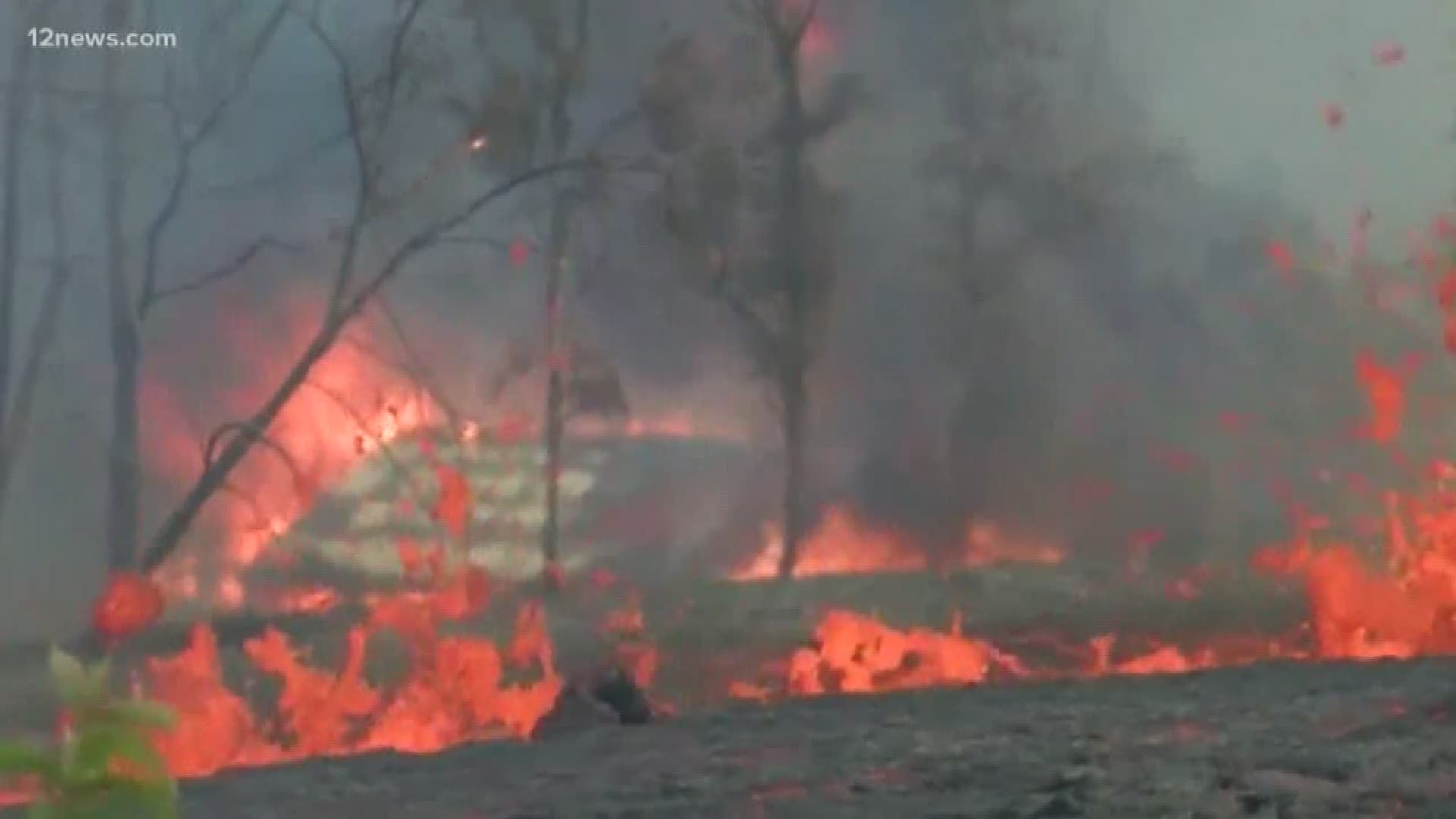FLAGSTAFF, Ariz. - A Flagstaff research geologist is back from the Big Island to share the story of her adventures and responsibilities observing Kilauea's activities.
Elise Rumpf, research geologist with the U.S. Geological Survey (USGS), saw the power of Kilauea first-hand during her eight days in Hawaii.
“It’s exciting on one level, but it’s also very humbling because you can really see the force of nature,” Rumpf said.
She had plans to go to Hawaii on a trip for routine field work, but just two weeks before she took off, the volcanic activity began, turning it into an opportunity to be part of historic research on Kilauea.
Taking the night shift, Rumpf’s team tracked the lava flow to pass on information critical to public safety.
“How quickly it might cross any roads or get to new neighborhoods,” Rumpf said.
Thermal cameras on unmanned aerial systems gave a better understanding of the lava’s speed, leaving volcanologists in awe.
“We saw them from the drone at about 1 in the morning,” Rumpf said of the lava flows.
Rumpf said she was shocked when she went up in a helicopter just a few hours later at sunrise and saw how much they had moved.
“Around 6:30, when we got in the helicopter, they had advanced several kilometers and there was a new lava flow that hadn’t been there, or at least we hadn’t seen the night before,” Rumpf said.
The volcanologist explained lava samples tell the story of magma’s source, age and viscosity, allowing scientists to predict how fast it will move above-ground.
Safety gear from head to toe was key while on the field and a shield necessary during sample collection.
“It’s basically a piece of tin roofing. It’s maybe two feet by four feet, and you can put it in front of you to protect yourself from the heat because it does get very, very hot,” Rumpf said.
Constant surveillance of growing cracks, fire fountain heights and flaming vents put researchers at risk of the molten ballistics unexpectedly shooting out and the toxic plumes drifting in the wind as lava and ocean met.
Rumpf explained situational awareness saved lives. She got close enough to a fiery flow for a shot on her cell phone.
Shortly after we made the decision not to go up to the lava flow, this tree started burning and fell into the road,” Rumpf said.
It was an unimaginable adventure with a greater responsibility.
“Observing these carries a lot of responsibility because we realize as USGS scientists, it’s our goal to protect life and property and when you see something like this and all the power, you know that unfortunately, you might not be able to save all the property,” Rumpf said.
Rumpf said if this volcanic activity continued, she could return to Kilauea in about a month.

